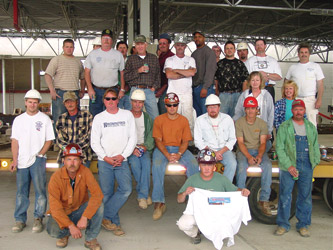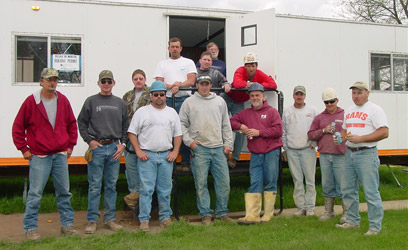
Many times through the course of my work, I’m asked how a person would get into the union construction trades and why a young person would consider a career in the union trades. The answer I give is typically met with surprise.
BAT-approved (Bureau of Apprenticeship and Training) union construction apprenticeship programs allow apprentices to “earn while they learn.” An apprentice spends his or her days on an actual construction site working side by side with a journeyperson who typically is one of the best in that field. Then the apprentice spends several nights a week attending school, studying the multifaceted elements of their chosen craft. The term of apprenticeship varies by craft, with a minimum of two years and up to five years of training required.
With the average “on-the-check” hourly rate of $29.13 an hour, the average union construction worker has the potential to earn $60,000-plus annually. With additional benefits included in the package such as pension and health insurance, this equates to a solid middle-class career.
Demand for new skilled construction workers by 2016 is estimated to equate to 785,000 additional jobs nationally. Aging baby boomers leaving the industry coupled with continual growth is driving this need. The opportunity for a lucrative union construction craft career is available for a person who is willing to do what it takes to succeed.
Another startling statistic is that just four out of 100 college graduates will earn more right out of school than a union craftsperson who has completed his or her apprenticeship—and the skilled craftsperson has no student loans to repay. Typically, the only costs to the apprentice are books and their time. Besides the great income, pension, healthcare and free education, another benefit, not always tangible, that makes the union building trades desirable is satisfaction.
The sense of satisfaction in the knowledge that when a person completes their training and works their chosen trade, they are able to step back and look at what they have created. Satisfaction as they walk into the Peoria Civic Center, when they safely cross one of the bridges spanning the Illinois River, when they seek service at nearly every business in our area—the mark of the union construction trades are stamped forever on these magnificent structures.
So what does it take to be accepted into a union construction apprenticeship program? The trades require:
 A high school diploma or GED certificate
A high school diploma or GED certificate- The applicant’s transcript (high school and college, if applicable)
- A copy of the applicant’s official birth certificate
- A valid Illinois driver’s license
- Copies of the discharge paper (if the applicant is a veteran of the armed forces)
- Any other certificates of accomplishment or documentation that may apply to the trade they are seeking.
The applicant must also be a resident within the jurisdiction boundary of the local union to which they are applying for apprenticeship. Many of the trades only offer apprenticeship openings at certain times of the year or as the need to replenish the workforce arises, and several charge a nominal handling fee to offset the cost of the application process.
The next step in the process involves notification to the applicants that a pre-interview exam is required. These exams typically include trade math, reading comprehension, problem solving and mechanical aptitude testing. Most of the trades require a minimum grade of 70 percent to be considered for an interview.
If the applicant has scored an acceptable grade, a face-to-face interview is scheduled with the trade’s Joint Apprenticeship Training Committee. These committees typically include an equal number of employers and union members to conduct the interview. If the candidate is selected to the apprenticeship program, the next step will be a pre-employment physical, including a multi-panel drug and alcohol screening test.
When the applicant completes these steps successfully, they are accepted into the apprenticeship program. After serving a 6 to 12 month probation period, the apprentice is sworn into the union. The apprentice then begins his or her on-the-job training and formal classroom instruction portion of the apprenticeship program. Random drug and alcohol testing typically occurs throughout the apprenticeship training. If apprentices fail to maintain attendance to the worksite or class, they will be dropped from the program.
The union construction trades have an aggregate graduation rate of nearly 90 percent of accepted apprentices. The skills required to be a successful apprentice applicant and journeyperson are the same as those required to be a successful college student: a high school curriculum with emphasis on math, algebra, geometry, trigonometry, natural sciences, English composition, computer literacy and communication skills. The successful applicant will also consider vocational classes, if available, such as drafting, metal and wood shop, and building construction classes.
To many outside the construction industry, the perception of a construction craftsperson is one of the characters portrayed by Dan Aykroyd on Saturday Night Live: the obnoxious, undereducated plumber with the large body and a very unflattering view of the rear.
The reality is that our union construction trades people are the best-educated, most-efficient, safest construction workforce in the world. In closing, if you or someone you know are interested in a career that pays a good wage, provides health insurance and a great pension package, can’t be outsourced, and will challenge your abilities day in and day out, then perhaps a career in the union building trades may be the right choice. iBi

